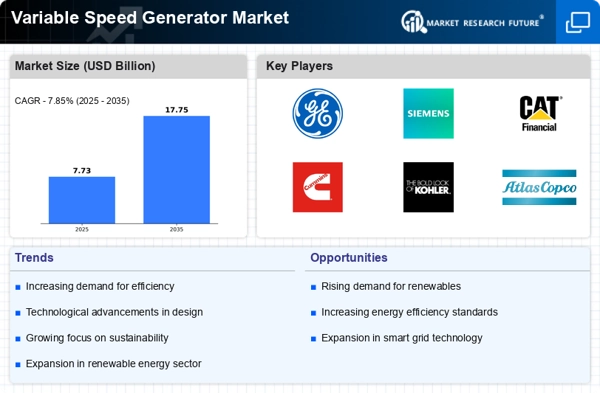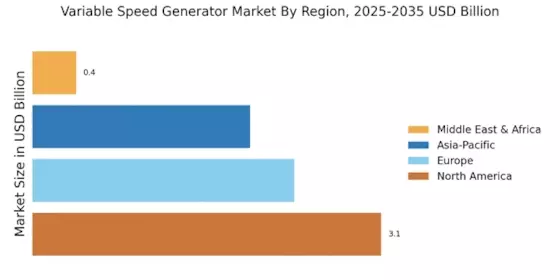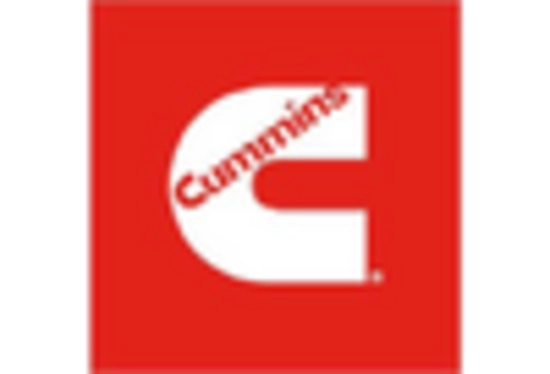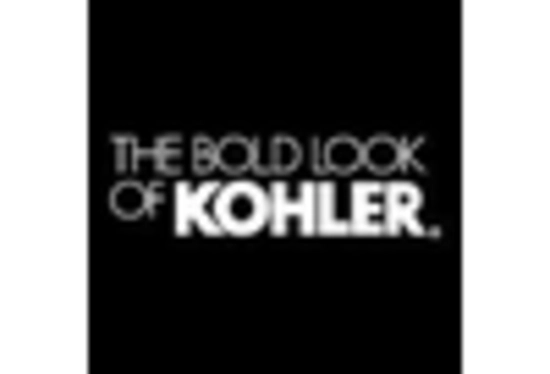Growing Industrial Applications
The Variable Speed Generator Market is benefiting from the growing industrial applications that require reliable and efficient power solutions. Industries such as manufacturing, construction, and mining are increasingly adopting variable speed generators to meet their energy needs. These generators offer the flexibility to operate under varying load conditions, making them ideal for applications that experience fluctuating power demands. The industrial sector is projected to account for a significant share of the market, driven by the need for uninterrupted power supply and operational efficiency. Additionally, the rise of automation and smart manufacturing practices is likely to further propel the demand for variable speed generators, as they can seamlessly integrate with advanced machinery and control systems.
Increased Focus on Energy Efficiency
The Variable Speed Generator Market is significantly influenced by the increasing focus on energy efficiency across various sectors. Industries are under pressure to reduce operational costs and minimize energy consumption, leading to a heightened interest in variable speed generators. These generators are designed to adjust their output based on demand, which can result in substantial energy savings. Reports indicate that implementing variable speed technology can reduce energy costs by up to 30% in industrial applications. This trend is further supported by government incentives and regulations aimed at promoting energy-efficient technologies. As organizations seek to comply with these mandates, the demand for variable speed generators is expected to rise, thereby enhancing their market presence.
Expansion of Off-Grid Power Solutions
The Variable Speed Generator Market is experiencing growth due to the expansion of off-grid power solutions. As remote areas and developing regions seek reliable energy sources, variable speed generators are becoming increasingly popular for their ability to provide consistent power in locations without access to traditional grid infrastructure. This trend is particularly evident in rural electrification projects, where variable speed generators can be deployed alongside renewable energy systems to create hybrid solutions. The off-grid market is anticipated to grow significantly, with estimates suggesting a potential increase of over 10% annually. This growth presents opportunities for manufacturers to develop tailored solutions that cater to the unique needs of off-grid applications, thereby enhancing their market reach.
Rising Demand for Sustainable Energy Solutions
The Variable Speed Generator Market is witnessing a notable increase in demand for sustainable energy solutions. As countries strive to meet their carbon reduction targets, there is a growing emphasis on renewable energy sources such as wind and solar power. Variable speed generators play a crucial role in these applications by providing the necessary flexibility to adapt to fluctuating energy inputs. According to recent data, the renewable energy sector is projected to grow at a compound annual growth rate of over 8% in the coming years, which will likely drive the adoption of variable speed generators. This shift towards sustainability not only aligns with global energy policies but also encourages manufacturers to innovate and develop more efficient products that cater to environmentally conscious consumers.
Technological Innovations in Variable Speed Generators
The Variable Speed Generator Market is experiencing a surge in technological innovations that enhance efficiency and performance. Recent advancements in power electronics and control systems have enabled generators to operate at variable speeds, optimizing fuel consumption and reducing emissions. For instance, the integration of digital controls allows for real-time monitoring and adjustments, which can lead to a 15-20% increase in efficiency compared to traditional generators. This trend is likely to attract investments from manufacturers seeking to improve their product offerings and meet stringent environmental regulations. Furthermore, the development of smart grid technologies is expected to create new opportunities for variable speed generators, as they can seamlessly integrate with renewable energy sources, thereby expanding their application across various sectors.


















Leave a Comment